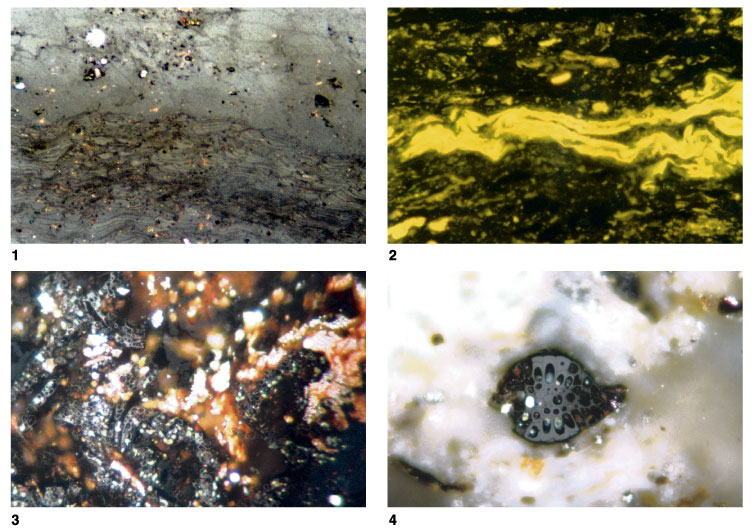
Plate P14.
Suberinite, fungal tissues. 1.
T5817; Hole 1109D; 688.21 mbsf. Wood tissue showing the outer layers with
suberinite present in the upper part of the field and gelified tissue in the
lower part of the field (reflected light; field width = 0.22 mm; mean vitrinite
reflectance = 0.40%). 2.
T5818; Hole 1109D;
696.89 mbsf. Prominent layer of strongly fluorescing suberinite is shaly coal.
The dark layers and lenses are vitrinite, and abundant resinite and
liptodetrinite are also present (reflected light; field width = 0.22 mm; mean
vitrinite reflectance = 0.28%). 3.
T5828; Hole 1115D; 241.48 mbsf. Telovitrinite (dark gray) with abundant pale
gray fungal hyphae invading the tissues. Fungal attack is common, but the hyphae
do not always show optical contrast as strong as in this field (reflected light;
field width = 0.22 mm; mean telovitrinite reflectance = 0.15%; fungal tissue
reflectance = 0.66%).
4.
T5819; Hole 1116D;
703.23 mbsf. Fungal resting spore (sclerotium). Occurrences of sclerotia and
teleutospores are highly characteristic of Tertiary and Holocene coals and, to a
lesser extent, organic-rich sediments. Although similar fungi were present at
earlier times, these highly chitinized bodies were not preserved (reflected
light; field width = 0.22 mm; mean vitrinite reflectance = 0.39%; sclerotinite
reflectance = 1.20%). Click on image or number to see enlargement.



![]()